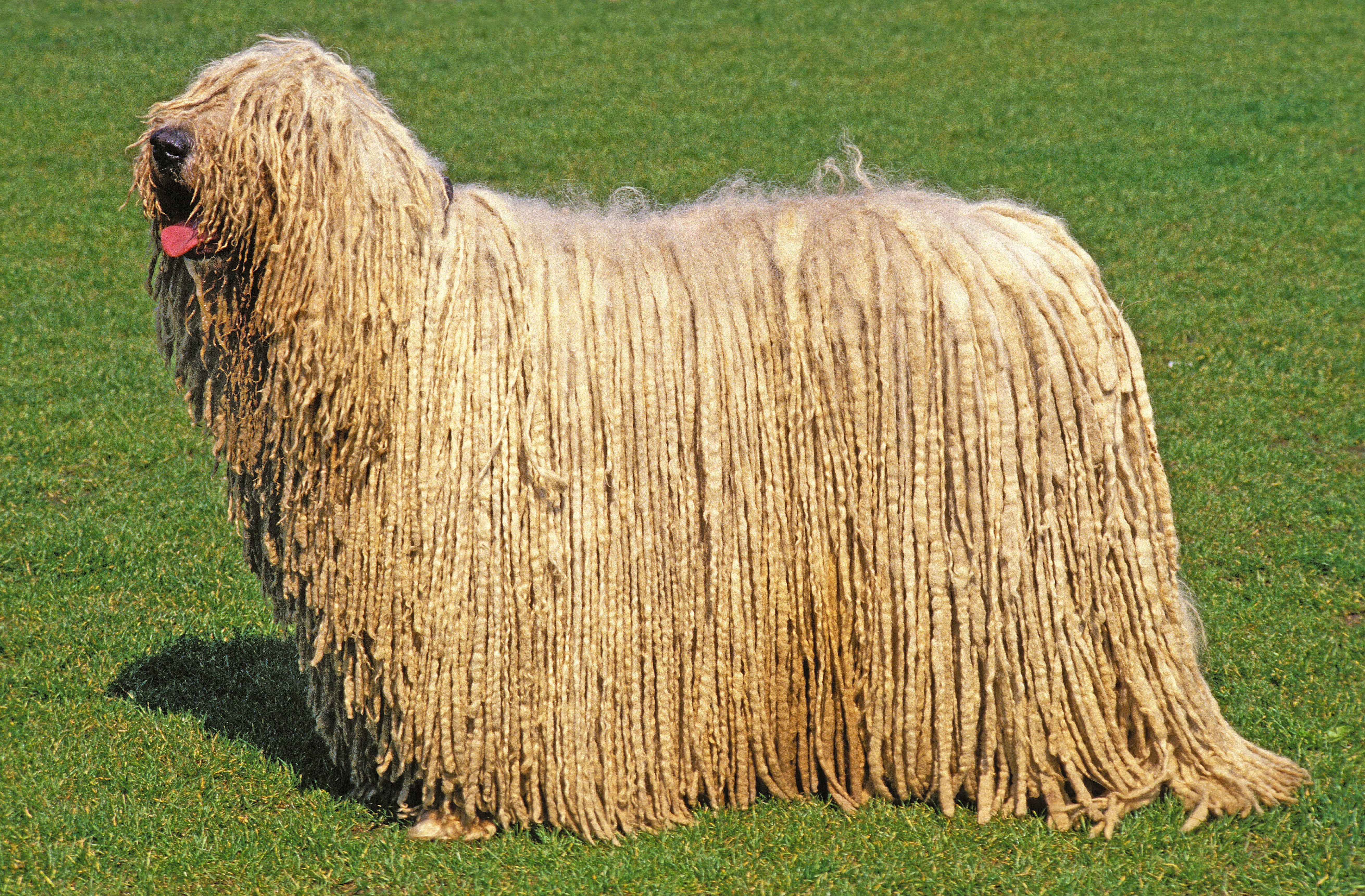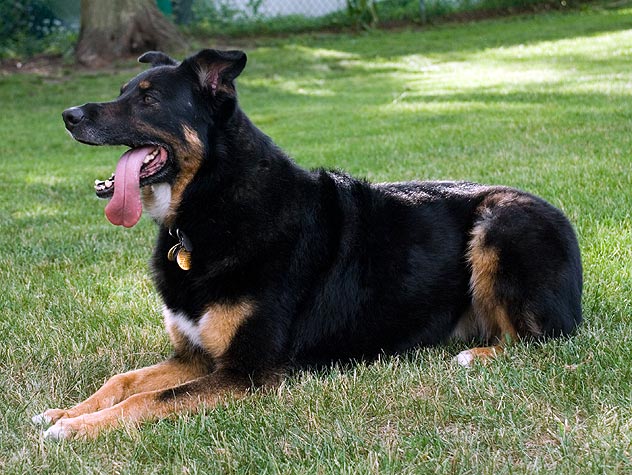Komondor
The Komondor’s iconic coat is hand-corded, taking up to five years to reach the ground. They are large and muscular livestock dogs, originally bred to protect sheep and blend in with the flock. Relatively unknown outside of Hungary, they can be stubborn but devoted to their families.
Breed characteristics carousel
Learn More
Need to Know
- Dogs suitable for experienced owners
- Extra training required
- Generally healthy breed
- Enjoys active walks
- Large dog
- Some drool
- Requires frequent grooming
- Quiet dog
- Barks, alerts, and may be physically protective/suspicious of visitors
- Could have issues with unknown dogs but gets along with known dogs
- May need additional training to live with other pets
- May need additional supervision to live with children
- Needs a large yard, preferably in rural areas
- Can be left alone with training
- AKC Registered Breed

Personality
Bred to be independent watchdogs, the Komondor can be stubborn. Socialization is essential to have them live as family companions, although they do best as working livestock dogs, even today. They are reserved with strangers and weary of other dogs, but good with family pets and livestock. They are happiest when they have a job to do that requires protecting. They can be calm, but courageous when needed.
The Komondor is a Hungarian sheepdog that looks like it belongs with the flock. They were originally bred to live among the sheep. The breed is likely to have originated well before the 16th century, but the first documentation of the Komondor dates back to 1555. They are still used as guard dogs, first coming to America in the 1930s. The Komondor breed is still relatively rare everywhere except its native Hungary.
Those familiar with livestock breeds are best for the Komondor, preferably on a farm or on a lot of land. They don’t love visitors and are always on high alert. The Komondor’s coat requires very specific care and takes some time to groom. Owners should be ok with “eau de dog,” as the Komondor’s heavy corded coat can take up to 24 hours to dry fully. You’ll also want to have patience—Komondor dog owners will get asked constantly about the breed.
Daily exercise is important to the Komondor breed. Training and problem-solving will also exercise their minds. A large, rural yard with a secure fence is preferable.
The Komondor dog’s massive coat catches a lot of debris and water. Owners will need a large place to examine the dog, wash, and hand cord them. Additionally, this is a country dog at heart who will need a secure, fenced-in property with plenty of land to roam. City life is not for them!
The Komondor dog’s striking coat is coarse and corded, taking up to five years for the coat to reach the ground. The coat cannot be brushed; instead, the hair needs to be divided by hand from the skin occasionally. Cord maintenance is time-consuming but necessary as neglected cords can cause huge mats. Check the dog after each walk to make sure nothing has been swept up in the coat.
The Komondor has a natural suspicion towards others, making them a little more difficult to train than the average dog, especially as they don’t particularly enjoy it. They respond well to positive reinforcement, patience, and a gentle hand.
If you live in the country and have few visitors—and love grooming—the Komondor is for you. They are better with older children. Their heavy coats make it hard to read their body language, especially for younger children.
The cost of a Komondor from a breeder is significantly more than the cost of adopting one from a local shelter or rescue. The adoption fee usually covers additional items such as spaying or neutering, vaccines, and microchipping.

Learn more about feeding and caring for your Komondor on Purina.
Did you know?
- Beck’s 1996 “Odelay” album features a Komondor on the cover.
- The Komondor cords take five years to reach full length. They can take a full 24 hours to dry after a bath.

